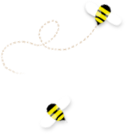- Students should dress for the weather.
- OPTIONAL – Teachers could bring a digital camera to document student finds.

| Title | Whose Clues |
| Audience | 1st Grade |
| Offered | September-Mid October |
| Length | 1hr. 25 minutes (look-around time in the Exploration Hall included) |
Simple ways how scientists classify and group living things are highlighted in this class. Firs,t six student volunteers are grouped in different ways with the rest of the class determining the reasons for the particular groupings. Next, a series of objects are grouped in different ways (plant/animal; alive/not alive). This leads to a presentation of the 5 things all living things need: food, water, shelter, air, and space. Classes then rotate through 2 activities:
1. A visit with a live and a toy snake to practice comparing and contrasting.
2. A “Wild Hike” in the park on which students compile a class list of observed animals and/or animal signs, examples of plants, and colors observed. If desired, students will collect some fallen autumn leaves and return to school with a zip-locked class collection. The group will also visit the ‘Bug Garden’ and search for live invertebrate examples like slugs, ants and isopods.
|
Invertebrate Vertebrate Food
|
Water Shelter Plant |
Air Animal Space |
Soil Energy Requirements for life |